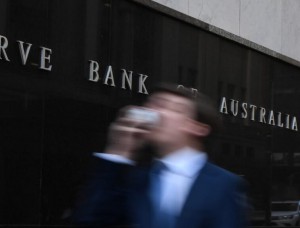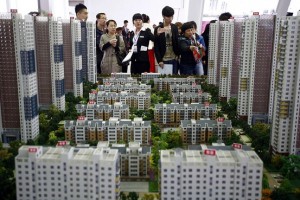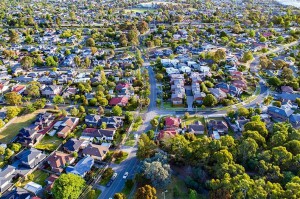There are more interesting articles, commentaries and analyst reports on the Web every week than anyone could read in a month.
Each Saturday morning I like to share some of the ones I’ve read during the week.
The weekend will be over before you know it, so enjoy some weekend reading.
NAB turfs cash rate call, now sees RBA on hold for another full year
It looks like the standstill on interest rates is set to remain as is.
According to this article from Domain.com.au interest rates will not be moving for at least another year.
Disappointing economic data has seen one of the nation’s biggest economists this week steer sharply away from a previously upbeat forecast.
Less than three months ago, NAB economists believed a strengthening Australian economy would see the Reserve Bank hike interest rates twice in 2018.
Now it expects no move for another full year, as the central bank looks content extending its record-breaking period of inaction.
NAB reviewed its economics forecast in February, changing its previous prediction from two single rate hikes this year to one, which it tipped to be in November.
On Monday, the bank released another update to its forecast – no move until mid-2019 – and that prediction is now “data dependent”.
“The change reflects the fact there is no sign yet of stronger wages growth and unemployment has been stuck around 5.5 per cent for the best part of a year,” NAB chief economist Alan Oster said.
The Reserve Bank has not moved interest rates since August 2016, with governor Philip Lowe signalling that while the most likely next move will be a hike, that may not happen for some time. Governor Lowe has become the longest-serving RBA boss to have not overseen a rate move.
“We still expect the economy to strengthen, leading to a declining unemployment rate,” Mr Oster said.
“This should eventually translate into stronger wages growth and give the RBA confidence that inflation will track back to its 2.5 per cent target.
However, we acknowledge there is considerable uncertainty around the timing at which wages growth will strengthen, and the time of the RBA’s next move will remain highly data dependent.”
The move from NAB brings the bank closer to the pack, with many other economists seeing a “lower for longer” attitude prevailing within the Reserve Bank.
“The data reinforces the view that the RBA will raise rates in February 2019,” Commonwealth Bank economist Elias Haddad said.
“Employment conditions in Australia are good but wage inflation is still relatively subdued. That gives the RBA plenty of space to stay on the sidelines for the time being.”
Read the full article here
Rise of Airbnb
Results show the rise of Airbnb continues to grow, and it’s not slowing down.
This Blog by Pete Wargent shows the statistics.
Short stays
Australia is becoming more and more…and more popular with tourists and short-term visitors to see family and friends.
The trend is predominantly being driven by Chinese and Asian tourism.
The same trend is also been pushed along by the lower dollar since the peak of the mining boom.
In New South Wales annual short-term visitors are fast closing in on 3.5 million.
This potentially has some significant implications for the dynamics of the housing market.
Hotels are typically very expensive in cities such as Sydney – certainly in the areas close to the city.
Read the full article here
Sydney’s expensive housing market may be helping to boost economic activity in other parts of Australia
Sydney may be an expensive property market to buy into – but could it actually be helping the economy?
This article from Business Insider looks into the affect the Sydney property market is having on Australia’s economy.
It looks like Australian economic growth improved in early 2018, led by continued strength in the eastern states.
However, Australia’s largest state economy, New South Wales, appears to be slowing on the back of weakening housing market conditions.
That’s the mixed news to come from ANZ Bank’s latest “Stateometer” with most state and territory economies seeing activity levels pick up in the March quarter compared to the levels seen late last year.
The Stateometer is a visual indicator that uses trends across 37 individual economic indicators to measure the performance of Australia’s states and territories over a particular quarter.
Think of it as a report card on how each state and territory economy performed compared to its historic average.
Here’s the latest snapshot.
For clarity purposes, any state and territory in the top half of the chart is deemed to be growing at an annual pace above its historic trend, while those in the bottom half are growing at below trend.
On the bottom axis, anything on the left suggests that economic activity is slowing, while anything on the right indicates it’s accelerating.
Based off the economic indicators received in the March quarter, the news was mostly good.
Not only did the data suggest the broader Australian economy grew slightly above its perceived trend level, widely regarded as around 2.75% per annum, but so did most individual state and territories.
The December quarter Stateometer presented a similar view.
However, year-on-year GDP growth slowed to 2.4%, partially in response to a large drag from trade which was temporarily impacted by weather disruptions.
Without a 0.4 percentage point drag from export volumes, growth would have been at 2.8%.
However, while New South Wales continued to grow at an above-trend pace, the data indicates that momentum in the state is slowing.
“Activity in New South Wales slowed to just above its long term average in the first quarter,” said Cherelle Murphy and Jack Chambers, Economists at ANZ.
“Housing was the main drag, falling to its lowest in almost six years.
“Household and business activity were also negative influences.”
However, while momentum in New South Wales slowed, it improved in all of its state neighbours — Victoria, the ACT, Queensland and South Australia.
Murphy and Chambers said this could be due to high house prices in New South Wales, especially in its capital, Sydney.
“New entrants from overseas continue to boost all state and territory populations, but New South Wales’ net interstate migratory losses have worsened,” they said.
“It is likely that very high house prices have tempted some New South Welsh elsewhere.
“In Victoria, ACT, Queensland and Tasmania, where house prices are relatively lower, net interstate migration has remained positive.”
For those states more aligned to the mining sector, Western Australia and the Northern Territory, the Stateometer suggests they continued to underperform the national average, undermined, in part, by weak population growth.
“Western Australia’s economy slipped in the March quarter, with the state in the bottom left quadrant of the ANZ Stateometer,” said Murphy and Chambers.
“That indicates an economy that is growing below trend and decelerating.
Its population growth rate has slowed dramatically over the past five years and house prices have been edging lower for three.
“The Northern Territory also grew at a below trend rate but has accelerated relative to the end of 2017.
Falling house prices in Darwin have also accompanied slower population growth.”
Looking ahead, the pair said they are watching house prices closely given their flow-on effects to the remainder of the economy are extensive.
Read the full article here
Top 10 most popular suburbs for immigrants
All roads lead to Australia – but which suburbs are the most popular for migrants?
In this article for Switzer, John McGrath looks at the results.
New population stats give a fascinating insight into the most popular suburbs with our newest arrivals from overseas.
They show that immigrants continue to favour areas where there is a strong established community of fellow countrymen, affordable accommodation and/or proximity to jobs and universities.
Along the East Coast states, it was the CBDs that were most popular, followed by suburban areas with big immigrant communities, according to recently released ABS Regional Population Growth figures for 2016-17.
It’s somewhat surprising to see that Brisbane CBD attracted the highest number of new international residents in 2016-17, with 12,847 net arrivals compared to 9,316 in Melbourne CBD and 8,505 in Sydney CBD.
Melbourne and Sydney are well known cities overseas and as such attract large numbers of new settlers.
However, immigrants are increasingly discovering the other capitals, with Brisbane certainly offering more affordable housing, not to mention great weather all year round and reasonable job prospects.
While the data didn’t specify where immigrants came from, we can draw some conclusions based on where they settled, especially in NSW and Victoria.
Take a look at the tables below.
We know it’s typical for those wanting to start new lives to do so in suburbs popular with fellow immigrants.
We also know that immigration from Asia and India is rapidly rising – in fact, it’s more than doubled over the past 10 years alone. We also know that Sydney and Melbourne have received the lion’s share of Asian immigration in recent years.
It’s therefore not surprising to see suburbs with a high proportion of Asian and Indian-born residents being the most popular neighborhoods among new arrivals last year.
In NSW, Parramatta council area in Sydney’s west was the No 1 suburban hot spot for new arrivals, with 7,682 immigrants settling there.
More than 20% of Parramatta’s residents were born in India and China, according to the 2016 Census.
Victoria’s No 1 suburban hotspot was Monash council area in Melbourne, with 6,734 new immigrant settlers.
Monash has large Chinese and Indian communities representing a collective 18% of the residential population.
In Queensland, the Gold Coast council area attracted 5,374 new immigrants.
The Gold Coast has traditionally been popular with New Zealanders (8% of the current residential population) and English immigrants (5.2%).
However, we’re definitely seeing growing appeal among the Chinese too, partly due to more Chinese development on the coast in recent years.
More than 3,500 Chinese-born residents moved to the Gold Coast between 2011 and 2016, according to the Census.
The opening of a dedicated Chinatown in Southport in 2014 and the first direct flights to China in 2015 reflects the Gold Coast’s rising Chinese resident profile.
Immigrant Hot Spots – Top 10 LGAS with new arrivals 2016-17
Net overseas immigration plays a bigger role in our national population growth than natural increase (births minus deaths), so it has a significant impact on our property market.
Read the full article here
THE list of Australia’s richest people has been revealed, and it includes one surprising “mystery” billionaire worth $5.9 billion.
The list is out!
So who made it to the top?
An article on news.com.au reveals who topped this years’ Financial Review Rich List.
CARDBOARD box tycoon Anthony Pratt has topped the list of Australia’s richest people in 2018 with a record personal wealth of $12.9 billion.
Property developer Harry Triguboff came in second on the 2018Australian Financial Review Rich List with a record fortune of $12.77 billion, followed by mining magnate Gina Rineheart on $12.68 billion.
Mr Pratt’s rising wealth comes both from the Visy cardboard box manufacturing and recycling empire, and the strong growth of Pratt Industries in the US, with the companies more than doubling in size since 2009.
The highest-ranked new entrant to the list is “mystery” billionaire Vivek Sehgah, the founder of India’s largest car parts manufacturer Motherson Sumi.
Mr Sehgah’s personal wealth of $5.88 billion places him ninth on the list.
“Less clear is the rationale for his Australian citizenship,” Rich List editor John Stensholt wrote earlier this week.
“Though some clues can be gleaned from records lodged with corporate regulators in Australia and abroad.
“Paperwork lodged with the Securities and Exchange Commission several years ago lists Australian as Mr Sehgal’s nationality, while documents for a fundraising in India led by the local office of JPMorgan confirm that not only is Mr Sehgal an Australian citizen, but he also ‘does not have an Indian-voter identification card’.”
#1: Anthony Pratt. Picture: Aaron Francis/The AustralianSource:News Corp Australia
#2: Harry Triguboff. Picture: Adam Yip/ The AustralianSource:News Corp Australia
#3: Gina Rinehart. Picture: Nigel HallettSource:News Corp Australia
#4: Hui Wing Mau. Picture: Paul Hilton/BloombergSource:Supplied
#5: Sir Frank Lowy. Picture: Toby ZernaSource:News Corp Australia
Hong Kong-based property tycoon Hui Wang Mau was fourth on the list with $9.09 billion.
He holds Australian citizenship after studying for an MBA at the University of South Australia in the 1990s.
His wealth is derived from the Hong Kong-listed Shimao Propery and extensive rural investments in Australia.
Retailer Frank Lowy rounded out the top five with $8.42 billion courtesy of shopping centre giant Westfield, which was acquired by Paris-based property group Unibail-Rodamco in a $32 billion takeover deal approved by shareholders on Thursday.
The total wealth of the Rich List was $282.7 billion, up from $233.1 billion last year, and it was only the second year in its 35-year history that three names had wealth above $10 billion. The average wealth per person was a record $1.41 billion.
There were 19 women on the list, including eight female billionaires.
Read the full article here
Weekend video: Do You Hear “Yanny” or “Laurel”? (SOLVED with SCIENCE)
from Property UpdateProperty Update https://propertyupdate.com.au/weekend-reads-must-read-articles-from-the-last-week-46/
























No comments:
Post a Comment